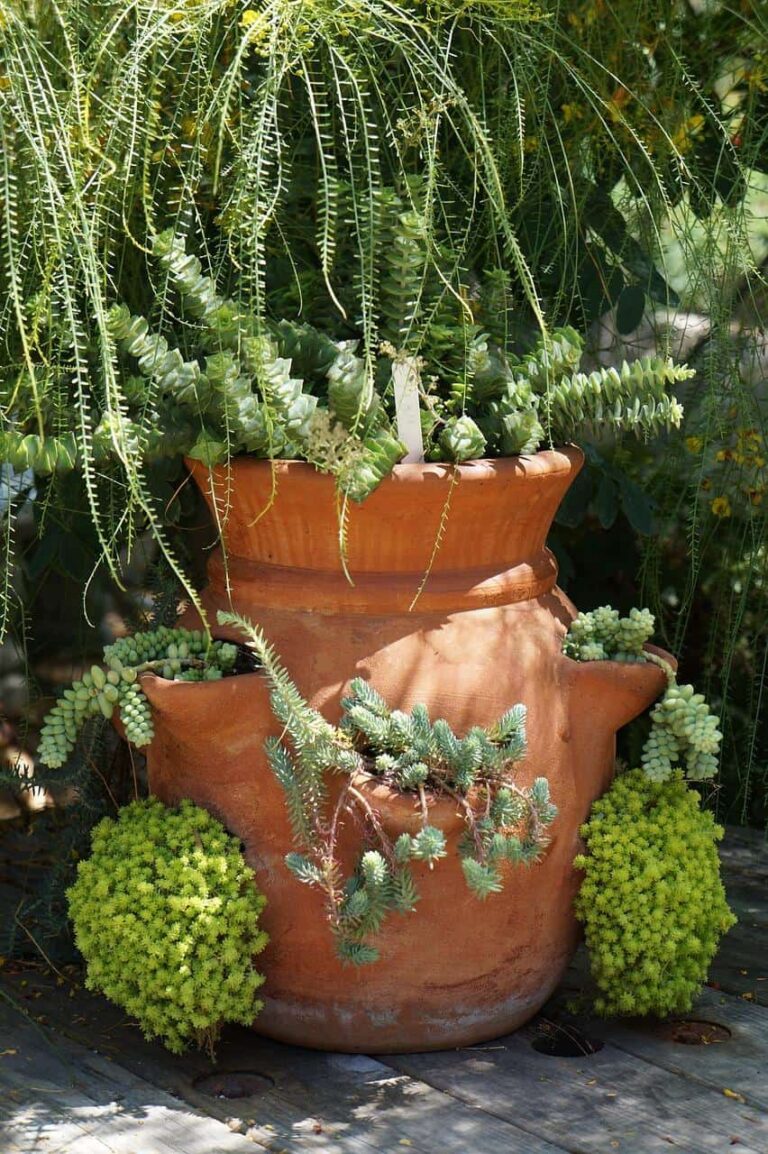Effective Janet Craig Compacta Care
Janet Craig Compacta is one of many cultivars known by the generic term, Dracaena. All of these plants share a similar appearance that highlights lush foliage. It is a low maintenance plant that will do well in the average home. The plant is a smaller version of its larger cousins and requires similar care. Continue reading to learn more about this attractive houseplant.
>> Check out Janet Craig Compactas on Amazon <<
What is the Janet Craig Compacta?
The Janet Craig Compacta (Dracaena deremensis ‘Compacta’) is a member of the Asparagaceae Family that includes plants you surely know such as agave and hyacinth. The name, Dracaena, describes both the genus and the common name of these plants. The plants in this genus look similar with some differences that a botanist would recognize rather than the home gardener.
Because the plants are so alike, you’ll often see the names used interchangeably. Other common names include Janet Craig Dracaena and Janet Craig Dragon Tree. The Janet Craig Compacta is a cultivar of the much larger Dracaena deremensis. The former gets about one foot tall, hence, the name ‘Compacta.’ The latter will get several feet tall.
The name, Janet Craig, refers to this particular cultivar. Because its name is applied to other Dracaena plants, be sure to check the label, so you’re getting the smaller-sized plant rather than one of the larger indoor varieties. You’ll see other taller plants such as corn plant with the same name. It’s not uncommon with plants that go by their genus name rather than a species.
>> Buy a Janet Craig Compacta on Amazon <<
Growing Janet Craig Compacta
You’ll typically see this plant grown as a houseplant. Its small size and easy care make it an excellent choice. It’s also a good-looking plant with vibrant green foliage. You can grow it outdoors too, but it has a narrow range of suitable USDA Hardiness Zones between 9b and 11. While it will tolerate both humidity and drought, it won’t handle the cold well.
Caring for Your Janet Craig Compacta
The key to growing a Janet Craig Compacta is proper moisture. It can tolerate many environmental stressors. Cold and drying out are two of its vulnerabilities. It is a perennial evergreen that has a bushy appearance. Its leaves are smaller compared to other Dracaenas at two to four inches long. They clump around a center cane, making it look like a pineapple.
Light
The Janet Craig Compacta will fare well with indoor light. As an outdoor plant, it prefers partial shade. It’ll be happy with bright, but indirect light. However, if you notice it is losing lower leaves, it’s an indication that it needs more light. It’s a slow-growing plant which is common among low-light plants. You should rotate the plant occasionally if you notice uneven foliage.
Moisture
Proper drainage is essential for keeping this plant healthy, especially if you’re keeping it in a container. Outdoors, it will need well-draining soils. You should let the soil dry between waterings. It doesn’t need a lot of water in normal household settings. Be careful not to over-water your plant to prevent root rot. It may drop leaves if the soil is too wet or dry.
Temperature
The Janet Craig Compacta will thrive in comfortable indoor temperatures in the 60 to 70-degree range with cooler temperatures at night. They are similar to what it live within its native southern East Africa. Your home will provide the perfect setting as long as it can keep to these basic ranges. During the cooler months, the plant may go dormant, meaning fewer waterings.
Fitting In
The Janet Craig Compacta is one of the slowest growing of the Dracaenas. For indoor settings that may be the perfect scenario with no worries that it’ll outgrow its space. For outdoor gardens, you should plant them about two feet apart all around to ensure proper air circulation around mature plants. Indoor plants usually don’t flower, but outdoor plants might attract bees.
Special Care Notes
Every plant has its quirks. The Janet Craig Compacta is no exception though its demands are modest. Some problems show up as issues with its leaves. They may brown or become discolored which is an indication of improper watering. It may mean either too much or too little watering. If you water when the soil is dry, you’ll avoid many of these problems.
Other issues hind more on aesthetic considerations. Its larger shiny green leaves are a dust magnet. You’ll need to wipe them down with a damp cloth occasionally to keep the plant looking its best. Looks aside, it makes good sense since it will help the plant undergo transpiration or gas exchange with the surrounding air. Dust can clog the stomata or openings on its leaves.
Pests and disease are rarely a problem, especially with plants that live stress-free because you’re meeting its basic needs. Remember, a plant that is stressed is more vulnerable because its defenses have been compromised so that it’s diverting more resources away from normal functioning. That’s why it’s essential to match the plant with a location’s conditions.
>> Get you own Janet Craig Compacta on Amazon <<
Pests
One problem you may encounter with the Janet Craig Compacta is mealy bugs. It’s not uncommon with a plant of its form. You’ll see the telltale signs at stem tips. You may see symptoms such as stunted growth and defoliation. The best way to treat it is by physically removing the pest. In extreme cases, you may need to remove infected parts of the plant.
This video from the Koppert Biological Systems explains the life cycle of the mealy bug to help you find the best ways to control it in your houseplants.
The Janet Craig Compacta is an attractive houseplant with foliage that stands out as its best feature. It is easy to care for, making it an excellent choice for the beginner or experienced home gardener. Because of its small size, you can easily find space for it in any room to bring a touch of nature to your home.
Photo by Forest and Kim Starr licensed under CC2.
Also Read: Aralia Plants


